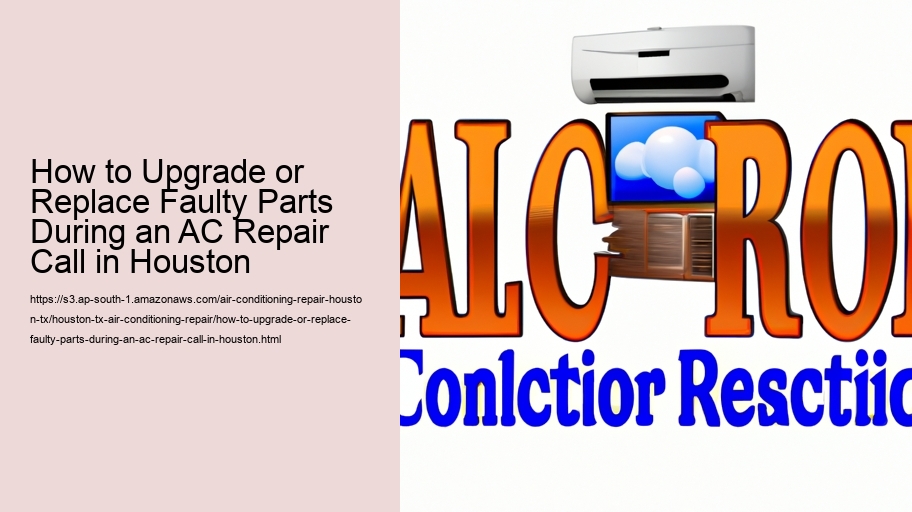Upgrading or replacing faulty parts during an AC repair call is a crucial aspect of ensuring your air conditioning system functions efficiently, especially in a city like Houston where the heat can be relentless. The process requires a blend of technical know-how, precision, and an understanding of the particularities of the local climate.
When an HVAC professional arrives for a service call in Houston, they start by conducting a thorough inspection of the unit to diagnose any issues. This diagnostic phase is critical; it determines which parts may be failing or underperforming. Once identified, the technician will discuss with the homeowner whether it's more cost-effective to repair or replace these components.
If upgrading or replacement is on the cards, here are some steps that one might expect during this process:
1. **Safety First**: Before beginning any work on the AC unit, safety protocols must be followed. This includes shutting off power to prevent electrical accidents and wearing appropriate protective gear as required.
2. **Assessment**: A detailed assessment helps determine which specific parts are faulty. Common problematic components include capacitors, compressors, fan motors, and refrigerant lines.
3. **Decision Making**: Once faults have been pinpointed, decisions need to be made about whether to upgrade to newer parts or simply replace them with similar models. Upgrades can offer improved efficiency and longevity but may come at a higher upfront cost.
4. **Sourcing Parts**: In Houston’s competitive market for AC repairs, technicians typically have ready access to quality parts either on hand or from local suppliers—minimizing downtime for homeowners.
5. **Installation**: The HVAC professional will carefully remove faulty components and install new ones following industry standards for installation practices.
6. **Testing**: After installing new parts, it's essential to test the system thoroughly to ensure everything operates correctly under different conditions—this may involve checking thermostat operations, airflow measurements, and coolant levels.
7: **Optimization**: With new components installed, there may be an opportunity for optimization tweaks such as adjusting refrigerant levels or recalibrating thermostats to enhance performance in line with Houston’s unique weather patterns.
8: **Maintenance Tips**: Post-repair or -upgrade advice can help extend the lifespan of AC units; professionals should provide maintenance tips tailored specifically for dealing with high humidity and temperature extremes characteristic of Houston’s climate.
9: **Warranty & Documentation**: It's important that all replaced parts come with their respective warranties documented correctly—a reputable technician should handle this automatically as part of their service offering.
10: **Final Run-through**:
Before considering the job done, another round of testing ensures all systems function seamlessly together after upgrades.
11: **Feedback Loop**:
After completion of repairs or replacements,
feedback between technician
and homeowner ensures satisfaction
with work carried out
and addresses any immediate concerns before finalizing the service call
In conclusion,
handling AC repairs calls
involves more than just tinkering around;
it demands expertise,
careful planning,
and consideration
of specific environmental factors.
For residents in Houston,
where reliable cooling systems are non-negotiables,
the ability to upgrade
or replace faulty AC parts efficiently not only brings relief from sweltering temperatures but also contributes significantly towards creating sustainable living environments within this bustling metropolis.
